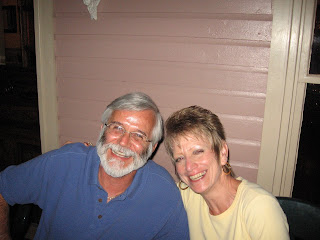 Riverboat pushing the Dutch Star.
Riverboat pushing the Dutch Star. One of the resident herons and riverboat.
One of the resident herons and riverboat. LST 325 sails by the campground.
LST 325 sails by the campground. 325 docked in Moline
325 docked in Moline 325 on D-Day
325 on D-Day The Interior
The Interior American Queen sets sail
American Queen sets sail Talking to passengers as the stern wheeler locks through.
Talking to passengers as the stern wheeler locks through. The smokestacks folded down to clear the bridge.
The smokestacks folded down to clear the bridge. American Queen sails by the campground. Listen closely and you may hear the calliope.
American Queen sails by the campground. Listen closely and you may hear the calliope.We are really enjoying our time parked on the banks of the Mississippi. We have watched the birds and the riverboat traffic glide by. Even though the summer here started with two floods that twice covered this campground with several feet of water the river was closed last week for a few days because of low water. The Mississippi above St. Louis is a series of navigation pools created by dams that have locks so the boats can pass through. Sometimes there is not enough water to maintain the proper depth for the big boats and the river must be dredged. The towboats push up to 15 barges and are 1200 feet long. Each barge carries as many as 58 trailer trucks. Most locks are only 600 feet long so in order to pass through, the barges must split their load and lock through one half at a time. Below St Louis the river is free flowing and no dams are necessary because the Ohio, Missouri and Illinois Rivers provide plenty of water to keep it deep enough for river traffic. We have seen many different birds including herons, gulls, vultures, duck, geese, and white pelicans.
We saw a WWII ship, LST 325 (Landing Ship Tank) sail by and then we went to Moline, Illinois to tour it. The ship was used for landings in the Mediterranean and was part of the back up force for troops going ashore at Omaha Beach on D-Day. During the invasion the ship made 40 trips across the English Channel to Normandy. In 1963 it was transferred to the Greek Navy and served until 1999. In 2000 it was acquired by The USS Ship Memorial and was sailed across the Atlantic by a crew of 29 veterans whose average age was 72. It arrived in Mobile, Alabama where restoration began on January 10, 2001. It is one of only two LSTs in the US and restoration continues at its new home port in Evansville, Illinois. The ship is 325 feet long and when in service had a crew of 150, could carry 40 battle ready tanks in its hold and other equipment on the deck. It would land directly on the beach and the front opened to unload the cargo.
In Davenport we saw the American Queen, the worlds largest river cruise ship at 418 feet, set sail and then pass through a lock. In order to pass under a bridge below the lock they laid the smokestacks down. The ship carries passengers on cruises up and down the river. As it was going through the lock it was so close to the side that we talked to the passengers who were heading to St. Louis from St. Paul. A few days later we saw the ship sail past the campground on its return trip. As it was going up the river they were playing the giant calliope on the stern. It could have easily been a ship with Mark Twain on board from over 100 years ago.




















 Jim, who did not have a beer, offers wine to Marion Morrison.
Jim, who did not have a beer, offers wine to Marion Morrison. 
























